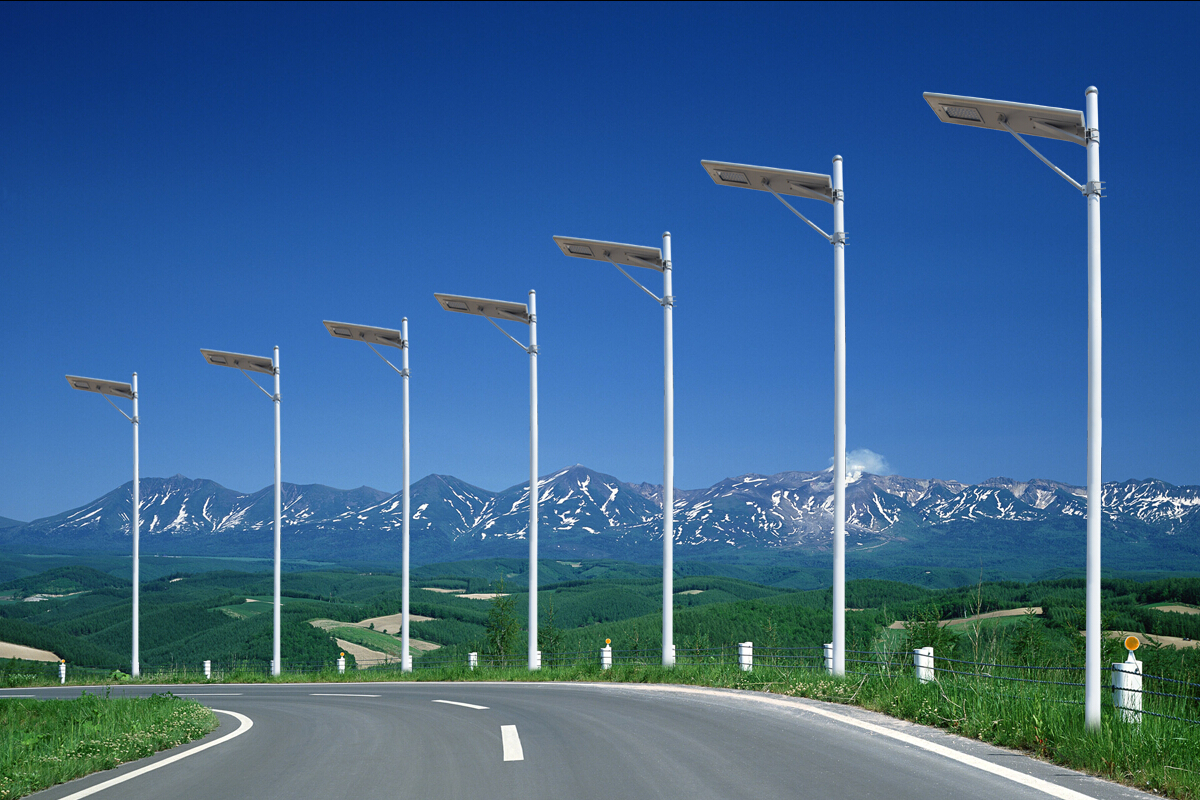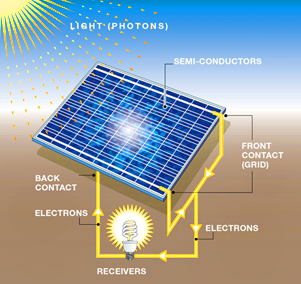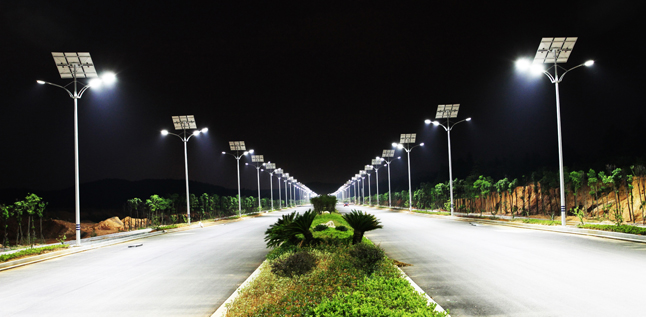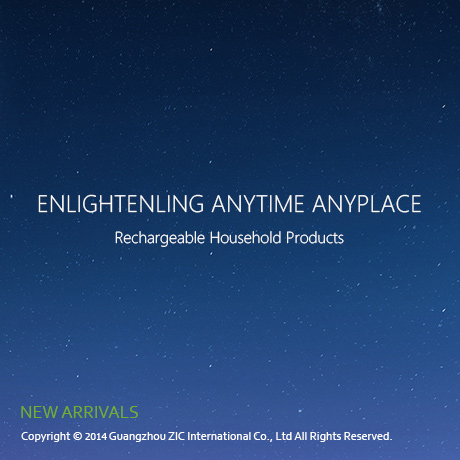PRODUCT CENTER

NEW ARRIVALS
You need to be verified before viewing the new arrivals. Please contact us freely for the account No. and password.

You need to be verified before viewing the new arrivals. Please contact us freely for the account No. and password.
Composition and characteristics of solar LED street lamps(Part I)
Sourcing: Solid State Lighting
Traslate by ZIC
INTRODUCTION:The solar LED street lamp utilizes the photovoltaic effect principle of the solar cell. During the day, the solar cell absorbs the solar photon energy to generate electric energy, and the electric energy is stored in the battery through the control of the photovoltaic controller. When the night falls or the illumination around the lamp is low, the battery is in the battery. The stored electric energy is supplied to the light source through the control of the photovoltaic controller, and the controller cuts off the light source power after the set time is reached.
The solar LED street lamp utilizes the photovoltaic effect of the solar cell. During the day, the solar cell absorbs the solar photon energy to generate electric energy, and the electric energy is stored in the battery through the control of the photovoltaic controller. When the night falls or the illumination around the lamp is low, the storage in the battery is stored. The electric energy is supplied to the light source through the control of the photovoltaic controller, and the controller cuts off the light source power after the set time is reached. The solar LED street light consists of the following components: solar panel, solar LED street light controller, battery pack, light source, light pole and lamp housing.

1. Solar Cell
 |
 |
The solar battery pack is the core part of the solar LED street light and the most valuable part of the solar LED street light. Its function is to convert the solar radiation capacity into electrical energy. Among the many solar cells, there are three types of monocrystalline silicon solar cells, polycrystalline silicon solar cells and amorphous silicon solar cells. In the eastern and western regions where sunlight is abundant, it is better to use polycrystalline silicon solar cells because the production process of polycrystalline silicon solar cells is relatively simple and the price is lower than that of single crystal silicon. In the southern regions where there are more rainy days and less sunshine, it is better to use monocrystalline silicon solar cells because the performance parameters of monocrystalline silicon solar cells are relatively stable.
For silicon solar cells, under standard conditions (spectral illuminance: 100 W/m2, spectrum: AM 1.5, temperature: 25 ° C), its open circuit voltage is 0.48 to 0.6V. A plurality of single-cell solar cells are connected and packaged to form solar cell modules of different areas and different powers, which may also be collectively referred to as solar panels. Monomer solar cells are generally unusable, and practical applications are solar cell modules.
At present, the packaging form of solar cells mainly includes two kinds of lamination process and epoxy process. The solar cell packaged by the lamination process can guarantee the working life of more than 25 years, and the process characteristics and service life are superior to the epoxy packaging form. Regardless of which solar cell has the following five major electrical parameters: short circuit current Isc; peak current Im; open circuit voltage Voc; peak voltage Vm; peak power Pm = Im × Vm.
The peak power of the solar cell is under standard conditions (ie STC: 101 standard defined by the European Commission, radiation intensity 1000W/m2, air quality AM1.5, battery temperature 25°C), maximum power output per unit of solar cell (component), unit peak Watt, or by the symbol Wp. The output power of a solar cell (component) depends on the solar illuminance, the solar spectral distribution, and the operating temperature of the solar cell (component). At different times and in different locations, the output power of the same solar cell is different.
According to the area, the output power per square meter of solar cells is about 120W; as the conversion efficiency increases, the output power increases accordingly. The selection of the output power of the solar cell module is determined according to the power source of the solar lamp, the time of use, and the local climatic conditions.
During the use of the solar cell module, if a solar cell is blocked by a leaf or the like for a long time, the blocked single-chip solar cell will be damaged by heat under strong sunlight, and may even cause damage to the entire solar cell module. It is the so-called heat island effect. In order to prevent the heat island effect, the solar cell is generally placed obliquely so that the surface of the solar cell cannot be attached to the obstruction.
Due to the large latitude span of the north and south of China, the installation angle of the solar cell module varies with the latitude of the installation area. Under normal circumstances, the installation inclination angle of the south of the Yangtze River is about 30O; the installation inclination angle of the north of the Yangtze River is about 45O; the northeastern region should be about 50O. The direction is positive south or west side 5O. Horizontally placed solar cells will reduce their output power by 15% to 20%.

The key to the perfect combination of solar photovoltaic technology with LED lighting is that both are DC, low voltage and can match each other. Therefore, the combination of the two does not need to convert the direct current generated by the solar cell into alternating current, thereby greatly improving the efficiency of the entire lighting system. At the same time, the use of batteries to store and release energy, making its advantages more obvious. With the in-depth study of related technologies, the luminous efficiency of LEDs is constantly improving. The advent of ultra-high-brightness LEDs will inevitably replace ordinary lighting electric light sources, and can save a lot of energy and no pollution.
LED lamp has long life, up to 1000000h, low working voltage, no need for inverter, high light efficiency, etc., domestically produced is 50lm/W, imported is 80lm/W. As technology advances, the performance of LEDs will increase further. LED lamp is a new type of lighting method that realizes lighting demand by illuminating LED module with DC low voltage. It has the characteristics of high brightness, good color rendering, etc. In addition, since the input of LED street lamp is low voltage DC, it can be combined with solar cell. In combination, LED as a light source for solar LED street lamps will be a trend in the future.
For more latest news and promotion, please leave your E-mail address.
Your Email
You need to be verified before viewing the new arrivals. Please contact us freely for the account No. and password.